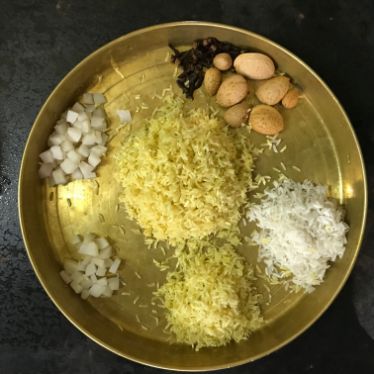

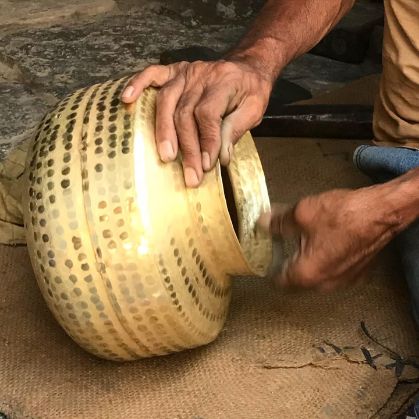

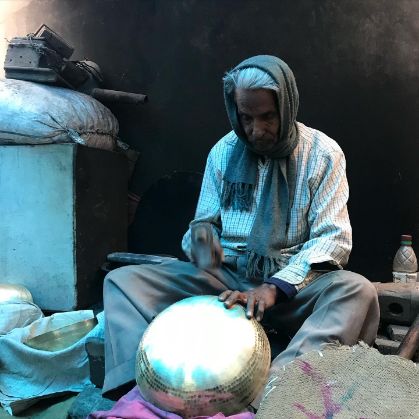



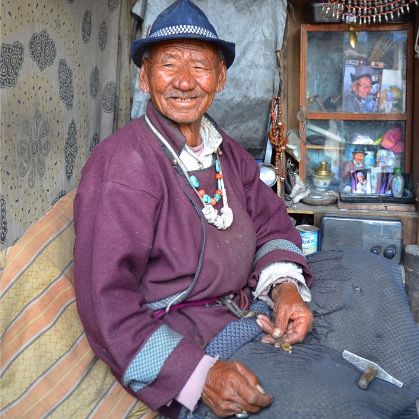

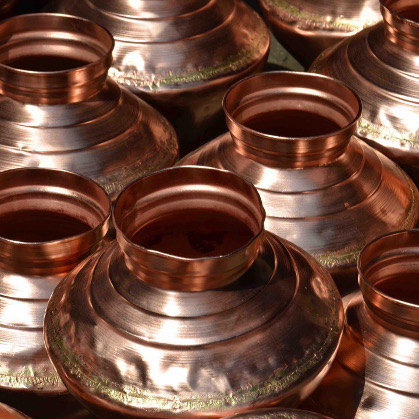


METAL
Historians have asserted that some of the earliest forms of metallurgy were first seen in India in the Indus Valley, and it was from here, that these traditions then travelled west. Certainly, it is clear there is a long history of bronze and brass in India. These metals were used with sophisticated techniques to make vessels, coins and later idols. ‘Dancing Girl’ is the oldest and most famous object on display at the National Museum Delhi. This 10.5cm tall, bronze sculpture of a girl dates to the Harappan Civilisation and is believed to be over 4000 years old. The delightful sculpture provides us with tangible proof of the metalwork masterly of Indian artisans from ancient times. By the 10th century the Chola dynasty bronze casters were creating an amazing array of sacred bronze deities, which are still regarded as masterpieces today. Author and historian William Dalrymple writes that; “It is the Nataraja, Shiva as Lord of the Dance, that is the ultimate Chola icon. It is a perfect symbol of the way the bronze-casters managed to imbue their creations with both a raw sensual power and a profound theological message.” Today there are communities of craftsman who continue to practice metalwork, crafting with iron, gold, silver and alloys such as bonze, copper and bell metal to create idols, ornaments, musical instruments and a vast array of utilitarian objects.
As with all the traditional crafts of India there are regional specialities, and many are ancestral occupations. For example, a village close to Kumbakonam in Tamil Nadu, in South India, has artisans who still make bronze idols using the lost wax process as it was made in the Chola dynasty. Moradabad is known as India’s brass city and has over a hundred thousand metal workers. The city of Hyderabad is famous for Bidri, an age-old technique producing a metal alloy with a lustrous black surface inlaid with silver or brass steel. Dhokra is a form of lost wax metal casting which was once a speciality of a nomadic tribe of metal casters and today is practiced by a few artisans in some rural areas of Orissa, Andhra Pradesh and Madhya Pradesh. There are some exciting examples of innovation taking place where contemporary designers are combining traditional craft and machine manufacturing to create products with a modern aesthetic.
“Metalwork was preeminent, for it has always been to India what ceramics are to China.” Dr. Mark Zebrowski
“Of all the objects we have seen and admired during our visit to India, the Lota, that simple vessel of everyday use, stands out as perhaps the greatest, the most beautiful. The village women have a process which, with the use of tamarind and ash, each day turns this brass into gold.” Charles and Ray Eames








